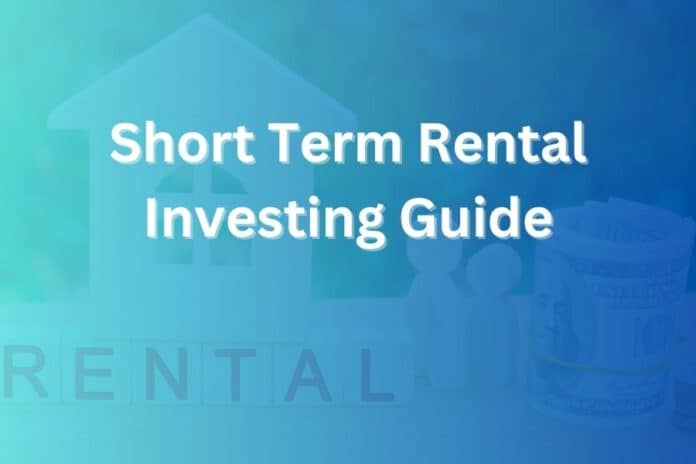Investing in short-term rentals offers a powerful move for property investors seeking higher returns, flexibility, and asset diversification. With nightly rates often 25 % to 50 % higher than long-term rentals in the right markets and occupancy climbing, you can build meaningful income if you get the strategy right.
In this article you’ll learn how to choose markets, structure financing, manage operations, and scale your short-term rental business for success.
Why Short-Term Rental Investing Makes Sense
You aim to earn more than a traditional buy-and-hold rental — short-term rentals (STRs) let you charge premium nightly rates and adjust dynamically to demand. That often translates into higher annual revenue and faster payback of your investment.
STRs also give you flexibility: you can block dates for personal use, adjust pricing seasonally, and pivot between business-travel guests and vacationers.
However, you must commit to higher operational effort, manage cleanliness, guest experience, and turnover. To succeed, you treat your property like a hospitality business, not just real estate.
Set Clear Goals and Define Your Strategy
Begin by clarifying your objectives. Are you targeting hefty monthly cash-flow, capital appreciation, or a hybrid? Do you want to focus on weekend vacationers, corporate travelers, or digital nomads?
Once your goals are clear:
- Determine your budget (purchase price, renovation, furnishings).
- Identify your target guest profile (families, couples, remote workers).
- Choose a property type (studio city apartment, beachfront house, cabin).
That clarity keeps you focused and prevents emotional buying decisions that drain returns.
Choose the Right Market and Property Type
Location remains king for STRs. Pick a market with strong travel or business demand, restricted short-term supply, and favorable zoning or regulation. According to recent data, markets with rising “bleisure” (business + leisure) travel are fueling demand for STRs.
Evaluate property type: consider amenities, proximity to attractions or airports, and guest expectations. A well-furnished, turn-key property near transport or leisure draws higher occupancy and reviews.
Use key metrics:
- Estimate average nightly rate × occupancy rate = projected revenue.
- Subtract operating costs (cleaning, utilities, platform fees, vacancy).
- Assess the purchase price and renovation cost against expected cash-on-cash return (aim for over 8-10 % initially).
Always research local “comps” – what other STRs charge nightly and their occupancy across seasons.
Understand Regulations, Zoning, and Compliance
This is a make-or-break area. Not all cities allow STRs freely – HOA rules, permits, registration, or bans may apply. Many markets enforce minimum stay requirements or ban whole-home listings.
Before buying, check:
- Local ordinance and registration requirements.
- HOA covenants or condo rules.
- Tax implications (local lodging tax, business license).
Failure to comply can lead to fines or forced conversion to long-term rentals, which drastically reduces your expected returns.
Secure Smart Financing and Plan for Costs
Financing an STR is similar to investment property financing but expects more scrutiny. Lenders may require higher down payments (often 25-30 % or more) and income qualification may treat revenue conservatively.
Factor in all cost lines:
- Purchase price + closing costs + furnishing or renovation.
- Recurring costs: cleaning, utilities, insurance (often higher), property management.
- Platform fees (e.g., Airbnb, Vrbo).
- Vacancy allowance and seasonal fluctuations.
- Maintenance and replacements (turns generate more wear and tear).
Your debt-service coverage ratio should allow you to comfortably meet payments even in slower months. Building a cash reserve equals stability.
Operations: Launch, Manage, and Optimize the Guest Experience
Ownership of an STR means you run a hospitality business. You must deliver great guest experiences to drive five-star reviews, higher occupancy, and repeat stays.
Key operational steps:
- Furnish the property thoughtfully: comfort, styling, smart locks, fast WiFi.
- Photograph professionally and craft a detailed listing.
- List on multiple platforms (Airbnb, Vrbo, Booking.com) and consider direct bookings.
- Set pricing dynamically based on season, local events, and demand trends.
- Manage turnovers: cleaning after each guest, restock supplies, inspect for damage.
- Communicate proactively with guests and respond to issues fast.
- Monitor reviews and adjust operations accordingly.
You can self-manage or hire a property manager or STR specialist (typically 10-20 % of revenue). Management frees your time but cuts into profit — you must weigh cost versus benefit.
Marketing, Pricing, and Competitive Advantage
Once operational, the work continues with marketing and optimization. Your listing competes with dozens in your area. To stand out:
- Use high-quality images and clear descriptions.
- Maintain an exceptional guest experience (which drives good reviews and better search ranking).
- Use seasonal and event-driven pricing. For example, near a festival or conference you can raise rates significantly.
- Monitor local competitors: know their nightly rates, occupancy patterns, and cancellation policies.
- Consider offering value-adds (late checkout, local guidebook, welcome basket) to justify higher rates.
Recent research shows that hosts who adapt pricing to demand and identify target guest segments (e.g., remote workers wanting “work-cation” stays) see higher occupancy and yield.
Measure Performance and Manage Risk
You must track metrics regularly:
- Occupancy rate (% of nights booked).
- Average nightly rate.
- Revenue per available night (RevPAR).
- Cash-on-cash return (annual cash flow ÷ cash invested).
- Operating expense ratio.
- Guest review score.
Risk management is also crucial. Potential risks include local regulation changes, economic slowdowns, increased supply saturation, natural disasters, or property damage. Mitigate by:
- Holding a strong reserve fund.
- Maintaining insurance for STRs specifically.
- Diversifying across markets or property types.
- Having an exit strategy: convert to long-term rental, sell, or rebrand for mid-term stays.
Scale Your Short-Term Rental Portfolio
Once you’ve mastered one property and proven strong returns, you can scale. But scaling smartly is different than simply buying more properties. You need systems and processes.
Steps to scale:
- Create your “buy-box”: price range, property type, and geographic zones where you have demonstrated success.
- Build a team: real estate agent experienced in STRs, property manager, local trades, cleaning crew.
- Leverage data and automation: use dynamic pricing tools and channel managers that sync listings, and automate guest check-in or checkout.
- Reinvest profits or refinance to pull out equity and buy the next property.
- Monitor portfolio performance as a combined entity, not just individual units.
Scaling well positions you for semi-passive income and moves you away from micromanaging daily operations into oversight.
Tax and Legal Considerations for U.S. Investors
In the U.S., STR investors enjoy tax benefits: you can deduct operating expenses, depreciation, interest on loans, property taxes, and more — just like long-term rentals. If you meet “active participation” or “material participation” rules, you may offset other income.
Important legal steps:
- Choose the right entity (LLC or S-Corp) for liability protection.
- Maintain separate accounting and records for each property.
- Understand applicable lodging tax laws in your city or state.
- Keep guest logs, cleaning receipts, repairs, utilities — good records support your deductions and defend audits.
Work with a CPA familiar with STRs — the rules differ from traditional rentals, and you want maximum benefits and compliance.
Conclusion
You now hold a comprehensive, expert-level guide to investing in short-term rentals in the U.S. You can define your goals, perform market and property diligence, understand financing, navigate regulation, manage operations with a hospitality mindset, optimize pricing and guest experience, scale smartly, and handle tax and legal complexities. If you treat your STR business with the same dedication as any professional enterprise, you’ll position yourself to generate premium returns, build cash-flow, and achieve lasting passive income. Your next step: pick your market, run the numbers, and take action with discipline.












